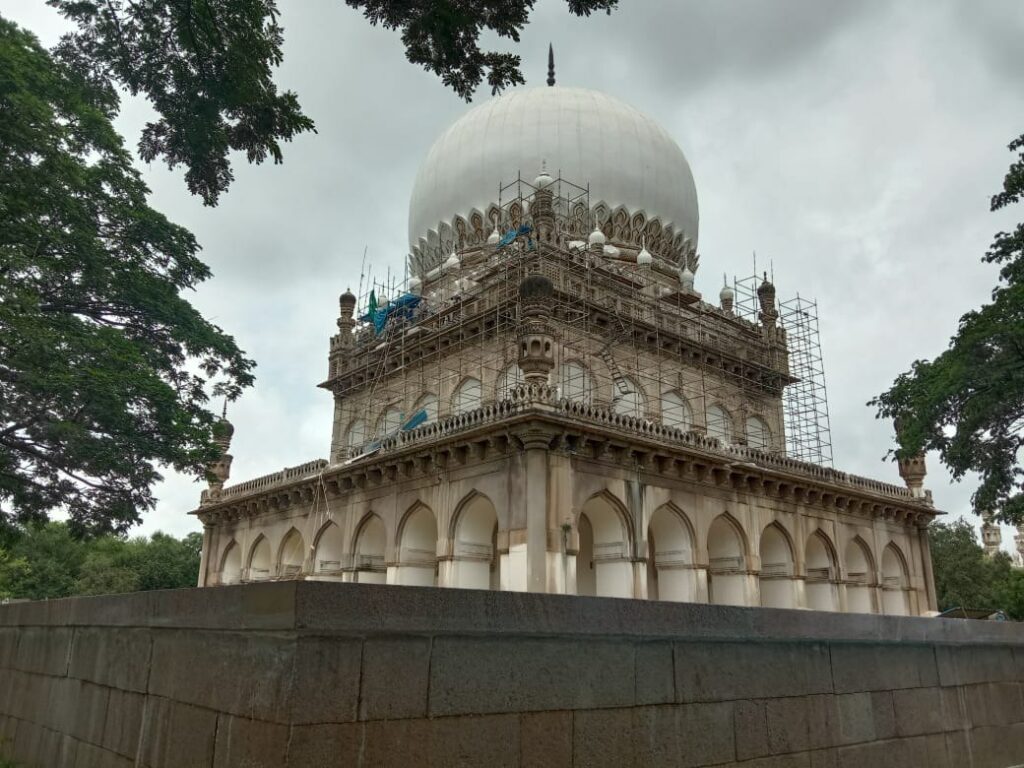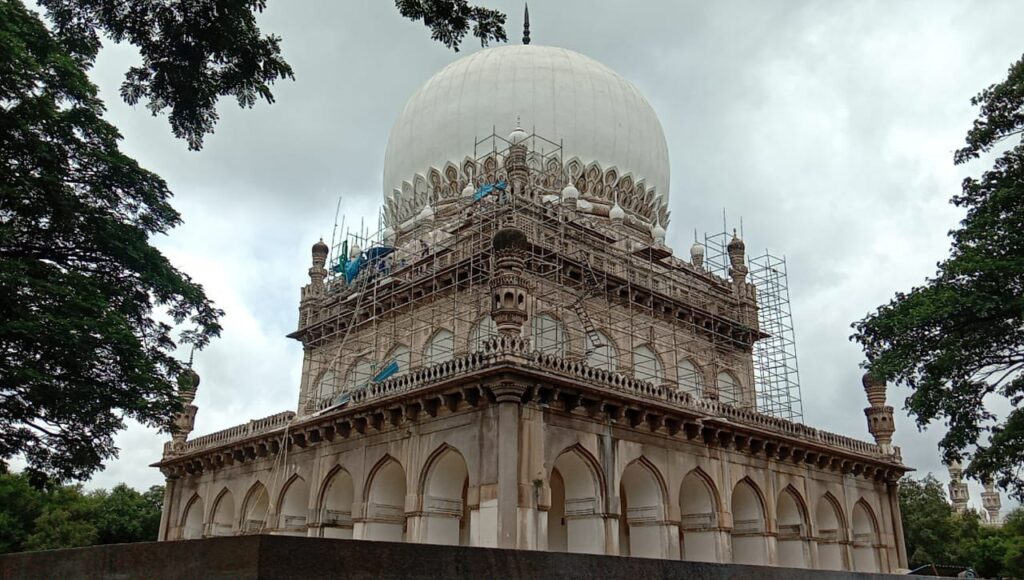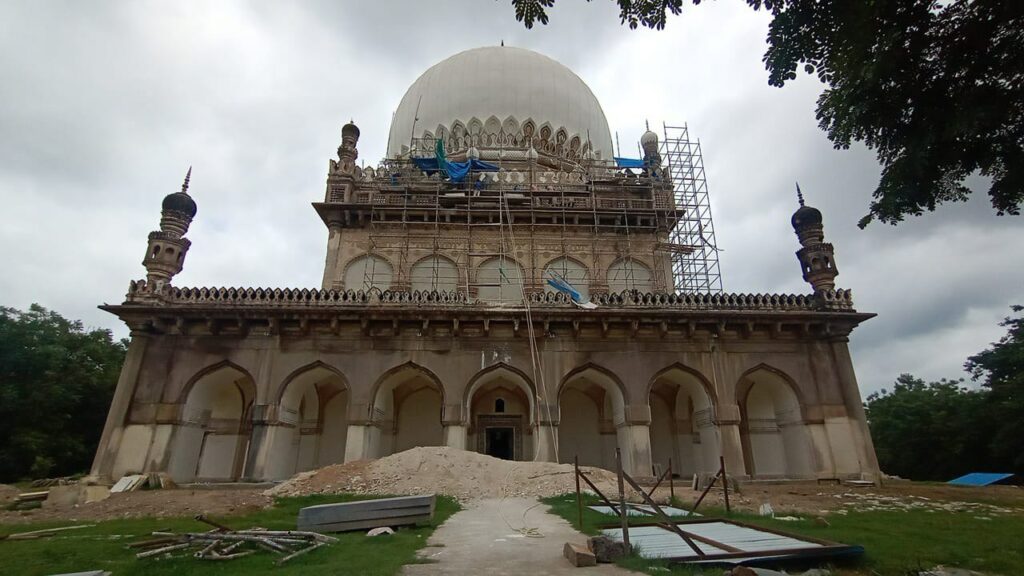Hyderabad: The historic Qutb Shahi Tombs have seen a remarkable change over the past few years ever since the Aga Khan Trust for Culture (AKTC) began working on it. From removal of several layers of cement on domes to recreating the fine architectural designs, almost half of the nearly 80 structures in the royal necropolis have already been restored to their lost glory.
And if all goes well, then the site will not only have an interpretation centre, but will also get linked to the Deccan Park beside it. It may be noted that as of now, when one visits the Qutb Shahi tombs, the entry is through a long path from the main road, wherein the first major tomb to see is that of Abdullah Qutb Shah (the 6th Golconda king), which should ideally be the last one to see, chronology wise.

The interpretation centre, which is currently being built, will go a long way in not just developing the royal necropolis, but will also connect it to the historic Golconda fort, where the Qutb Shahi rulers lived and also ruled from. The tombs complex is where the kings (along with their family members and others) were buried, and must be seen in conjunction with the fort, even architecturally.
The foundation stone for the interpretation centre was in fact laid by State IT minister K. T. Rama Rao, member of Lok Sabha from Hyderabad Asaduddin Owaisi, and other officials on 23 July.
“A permanent exhibition at the site itself will help both international tourists and local families understand Hyderabad’s glorious past. Together with the conservation works that we are undertaking, the building of the Interpretation centre will help strengthen the case for World Heritage designation – as UNESCO lays emphasis on both condition of monuments and their interpretation,” said Ratish Nanda, CEO, AKTC.

Tourists and others who visit the tombs (once it is open to the public again) will now have to walk a bit and reach one end of the tombs complex (north-west) if they want to see all the structures in a chronological order. The history begins from the tomb of Sultan Quli (1518-43), who founded the Qutb Shahi dynasty. His tomb lies in close proximity with the next three rulers (Jamshed Quli, Ibrahim Qutb Shah and Mohd. Quli Qutb Shah) in the necropolis.
Once the tombs complex is connected to the Deccan Park and the interpretation centre, then visitors will get a well-rounded view of the place, its connection to Golconda fort, and to the history of Hyderabad itself (Mohd. Quli Qutb Shah, the fourth ruler, founded the city in 1591).
The site will also provide important information such as the use of architectural models, elements of the buildings, architectural replicas, display of antiquity from the collection of the Department of Heritage, and will also use animations to illustrate the original grandeur of the sit; such as the tile work that once was used extensively in the complex.

As of now, phase-2 and phase-3 of one of the project is underway, under which several major tombs like that of Hayat Bakshi Begum (daughter of Mohammed Quli Qutb Shah, Hyderabad’s founder) and Abdullah Qutb Shah (7th king) are currently being restored. The ongoing restoration at the Qutb Shahi tombs complex is currently being undertaken by the AKTC, in partnership with the Telangana government.
So far, about 30 monuments in the Qutb Shahi Tombs complex have been restored under phase-1 of the project, which was completed in April 2018. Under the first phase, major works included the restoration of the boundary wall enclosure of Sultan Quli Qutb Shah’s (founder of the Golconda kingdom) tomb, and restoration of the Eidgah, as well.
